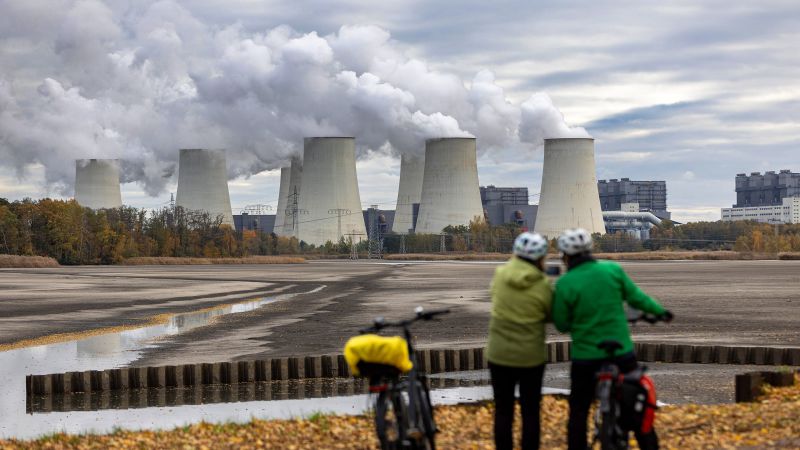Air pollution from coal-fired plants is much more deadly than originally thought, study finds | CNN
Air pollution from coal-fired plants is much more deadly than ... CNN


Sustainable Development Goals (SDGs): The Deadly Impact of Pollution from Coal-Fired Plants

Introduction
- No pollution is good for anyone’s health, but a new study found that scientists may have significantly underestimated just how deadly pollution from coal-fired plants can be. It also shows how tighter regulations can work.
Study Findings
- The study, published Thursday in the journal Science, found that exposure to fine particulate air pollution from coal-fired plants is associated with a mortality risk that is 2.1 times greater than that of particle pollution from other sources.
Understanding Particle Pollution
- Particle pollution, also known as particulate matter, is the mix of solid and liquid droplets floating in the air. It can come in the form of dirt, dust, soot, or smoke. Coal- and natural gas-fired power plants create it, as do cars, agriculture, unpaved roads, construction sites, and wildfires.
The Dangers of PM2.5
- PM2.5, one of the smallest forms of particle pollution, is so tiny – 1/20th of the width of a human hair – that it can travel past the body’s usual defenses. Instead of being carried out when you exhale, it can get stuck in your lungs or go into your bloodstream.
Health Impacts
- The particles cause irritation and inflammation and may lead to respiratory problems and chronic kidney disease. Exposure can cause cancer, stroke, or heart attack; it could also aggravate asthma and has been associated with a higher risk of depression and anxiety.
Mortality Impact
- Between 1999 and 2020, 460,000 deaths among people who got health coverage through Medicare were attributable to coal-fired plants. The mortality impact was higher in the eastern part of the US, which sees more coal-related pollution and has higher population density.
Regulations and Reductions
- As regulations got stricter over the years, deaths from this kind of pollution decreased substantially by 2020. The vast majority of excess deaths due to coal-related particle pollution in the study were between 1999 and 2007. The coal particle pollution-related deaths represented nearly a quarter of all PM2.5-related deaths among Medicare enrollees before 2009.
The Role of Clean Energy Alternatives
- The researchers studied emissions data from 480 coal-fired plants in the US and almost two decades worth of Medicare data. They modeled where the wind carried sulfur dioxides emitted by these plants, which can lead to the formation of other sulfur oxides that react with other compounds in the atmosphere to form particle pollution.
Limitations and Future Actions
- An editorial accompanying the study noted a limitation: it didn’t measure PM2.5 directly and did not include the effect of nitrogen oxide pollution. However, the study’s findings highlight the need for policymakers to adopt clean energy alternatives.
Global Impact and Advocacy
- While coal use in the US is now much lower than in the 1990s, its use globally is predicted to increase, leading to a high number of excess deaths in the future. The American Lung Association has been advocating for stronger measures to limit particulate matter pollution.
Conclusion
- The study emphasizes the deadly impact of pollution from coal-fired plants and the importance of implementing stricter regulations and transitioning to clean energy alternatives. It also highlights the need to address environmental disparities and ensure that everyone benefits from improved air quality.

Join us, as fellow seekers of change, on a transformative journey at https://sdgtalks.ai/welcome, where you can become a member and actively contribute to shaping a brighter future.







